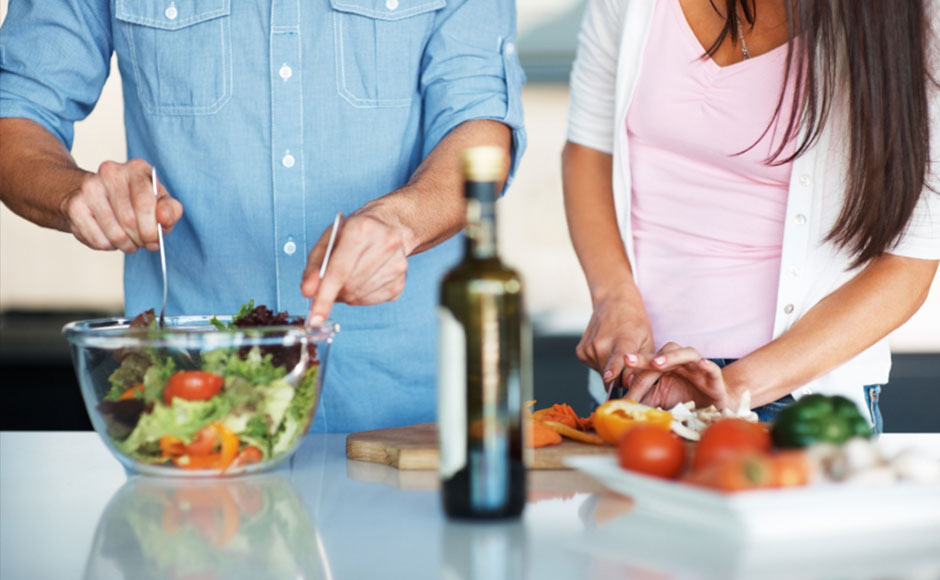
Healthy Cooking with Dyspraxia
Recently I was asked to deliver a webinar sharing nutrition tips and recipes for the Dyspraxia Foundation. In planning for this event I did lots of research to make sure I covered the areas that the audience would most benefit from. The research I did led me to think through some of the key challenges posed when it comes to cooking and eating healthily with dyspraxia and how these might possibly be addressed. In the broadest terms here are those challenges and possible solutions:
| Challenges: | Solutions: |
| Wanting to start everything at once | One Pot Cooking |
| Managing Timings | Kitchen Timer |
| Chopping | Buying ingredients already chopped/prepared |
| Standing Still for a long time | Minimal prep and one pot cooking |
| Portion Sizing | Using your hands as measuring tools |
One Pot Cooking
As far as the one pot cookery goes many of you will already know that I am the author of 2 one pot/pan recipe books. This is a style and speed of cooking that I enjoy very much. I don’t do faff! These are the books I have written so far that may be useful:
The Modern Multicooker Cookbook
I also have a vegetarian one pot book coming out in February 2021 called Modern Vegetarian Instant Pot Cookbook.
Furthermore, during the webinar I shared four more recipes that are not in my books. One is below:
A Curried Butternut Squash Soup
You will find these recipes at the end of this blog:
An Instant Pot Bacon and Mushroom Risotto – see below
One Pot Pepper, Olive and Mascarpone Pasta – see below
Chocolate and Banana Overnight Oats – see below
Kitchen Timer
The kitchen timer that I recommend for ease of use is this one.
However, other ideas from the audience included:
Using Alexa or similar devices
Using your Mobile Phone Timer
Using the Timer on your Oven
What to Buy Pre-Prepared
There are so many foods that have already been prepared and either frozen, refrigerated or tinned that make the objective of healthy eating without lengthy and intricate preparations easily possible. Often those that have been prepared and refrigerated lose significant nutritional value by the time we eat them. Frozen prepared vegetables are therefore preferable.
Frozen vegetable recommendations:
Garlic, ginger, onions, shallots, leeks, spinach, butternut squash, peppers, peas, sweetcorn, soffrito/mirepoix (a combination of onion, carrot and celery), green beans, ratatouille vegetables, kale, sweet potato chips
Tinned/Jarred recommendations:
Tomatoes, sweetcorn, artichokes, green beans, dried mushrooms, beans, lentils, chickpeas
Portion Sizing – A Rough Guide
Another health consideration is the quantity of food and the ratios of different food groups. Whilst it may not always be easy for some to weigh and measure precisely these rough guides can help. So, for each meal:
- Vegetables or salad: Half a plate
- High-quality protein: Quarter of a plate — this includes meat, poultry, fish, eggs, dairy, tofu, beans and pulses
- Complex carbs: Quarter of a plate — this includes whole grains and starchy vegetables
- High-fat foods: 1 tbsp — including cheese, oils and butter
OR if you prefer – Using Your Hands for Portion Sizing
A rough guide for each meal is:
High-protein foods: A palm-sized serving – such as meat, fish, poultry and beans
Carbohydrates: A fist-sized portion – starchy foods and whole grains
Vegetables: two cupped-hands per portion – eat a rainbow for a variety of nutritional benefits
High-fat foods: One-two thumb-sized portions — such as butter, oils and nuts
Straight-Forward Snacks
Healthy snacks are always good to have to hand in case you get caught short and having lots of varied ideas for healthy snacks means you are more likely to stick to healthier snacks and not get bored.
- Apple wedges (using apple wedger) and peanut butter
- Pre-packed smoothie mix with coconut water
- Nuts
- Seeds
- Trail Mix
- Chia Pudding – 35g chia seeds, 200ml milk, 10g cacao/cocoa, 25g honey
- Hummus/Tzatziki and mini cucumbers or oatcakes
- Nut butter on oatcakes
- Boiled eggs
- Tinned fish in sauce
- Olives
Minimal Preparation Meals
Some meals and recipes can be off-putting if they’re just too long-winded or require too many steps and processes. Some simpler recipes that involve minimal steps are as follows:
- One pot mushroom risotto – using soaked dried mushrooms, frozen onion/garlic, vegetable stock
- Ratatouille – using frozen ratatouille vegetables, tomato paste and seasoning
- Caponata – frozen ratatouille vegetables, frozen garlic, tomato puree, green olives, capers, balsamic vinegar, sugar
- Dahl – red lentils, frozen vegetables, tomato puree, frozen onions/garlic/ginger, cream, curry powder, water, salt
- Bean stew – frozen butternut squash, tinned whit beans, passata, frozen garlic, paprika, cinnamon, nutmeg, chilli powder, olive oil, water, salt
Useful Equipment
Finally, there are certain kitchen gadgets that make it easier to cook from scratch. The following are products that really do cut out time in preparation and cut out processes in the method.
Recipes
Creamy One Pot Pepper and Olive Pasta
350g penne
1 bag frozen peppers
250g pack of mascarpone
100g black olives
1 tbsp oregano
1 litre of vegetable stock
Ground black pepper
Simmer ingredients together in one pot for 15-20 minutes until pasta Al dente.
Bacon and Mushroom Instant Pot Risotto
1 tbsp olive oil
3 tbsp frozen chopped onion
1 tbsp frozen garlic
1 small pack of lardons
30g dried mushrooms, soaked in boiling water
250g arborio rice
650ml vegetable stock
Heat the pan on sauté. In the oil sauté the onion, garlic and lardons. Add the mushrooms, rice and stock. Set to High Pressure for 6 minutes. Quick Pressure Release at the end. Serve with parmesan cheese over.
Overnight Oats
50g oats
100ml milk
1 tsp maple syrup
1 tsp cocoa
1 tbsp peanut butter
1/2 banana, chopped
Combine and leave to soak overnight in the fridge.
